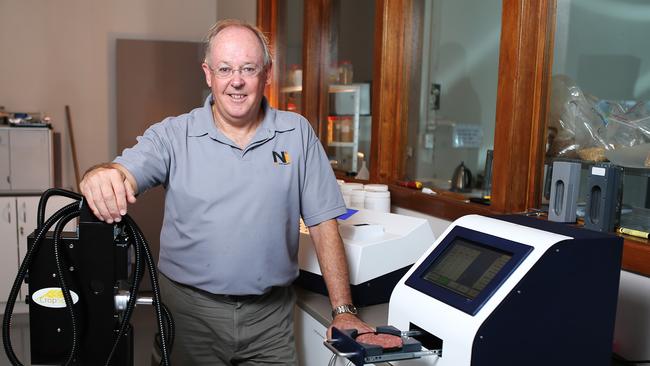Australian agriculture to Asia looks like being the next big thing
EVERYBODY, it seems, wants a piece of Australian agriculture. The demand has changed, the dollar is allowing exporters to make a few more dollars.

IF you go back 10 years or so, almost nobody wanted to be in agriculture.
It seemed everything was against you, from growing conditions, demand to the dollar.
If you supplied the local supermarkets then your prices and supply conditions were under extra pressure.
Fast forward to 2015 and beyond. Everybody, it seems, wants a piece of Australian agriculture. The demand has changed, the dollar is allowing exporters to make a few more dollars.
But the biggest realisation is that international free trade agreements will lead to demand for existing and new products growing exponentially in the coming decade.
The result is that, just as with the mining boom, those who provide equipment and services to the agriculture sector are also likely to get a boost.
It means those companies which have previously struggled to gain access to investors or capital might be overrun with opportunities.
However, the mining industry provides plenty of lessons about dealing with a boom market. There, overcapacity and soaring costs contributed to the downfall of the industry and rising costs.
Companies supplying the mining industry suddenly found themselves without work, or scrabbling for a new source of income to keep themselves alive.
The demand for food is likely to be more sustainable than minerals, as demand from the rising affluent Chinese community will be longer term than the building boom that created the demand for iron ore and coal.
This suggests those who make strategic decisions quickly and establish relationships with buyers in Asia, may be rewarded with long-term business.
But as the need for more production becomes paramount, with an undersupply of many rural commodities likely (just as it was with iron ore, coal and copper), there will be extra work for those who can help crops grow faster or more efficiently.
Those who are keen to rush into these areas would do well to watch the powdered milk market in Australia and New Zealand.
Within five years of the boom beginning, new entrants into the market created an oversupply. Prices could not be sustained.
So the key for any agribusiness is to move quickly, and decisively, but to budget as though tough times are around the corner.
FROM A GRAIN OF HOPE BIG THINGS GROW

HILLIP Clancy and his business, Next Instruments, is an astonishing story of persistence.
He had the idea for his business — to create instruments to analyse wheat and other grains — back in 1988. The problem was the 1987 stockmarket crash intervened and he never got the chance, or the backing, to set it up.
“When I first approached venture capitalists 13 years ago they said ‘You are in the agriculture. It only grows at 3 per cent a year … forget it’,” Mr Clancy said. Instead he created another two businesses, one a publishing company with his brother. But he was upfront with his sibling, saying as soon as enough cash was accumulated he would go back to his original idea.
Eight years later — in 1996 — he got his chance, but even then Next Instruments was a slow-burn.
Mr Clancy’s idea was to analyse the protein in wheat and other grains without the need to mill samples. His instruments could assess the value of the grain without physical intervention.
But since the tough early days, things have started to move pretty quickly. That’s because farmers and the end customer need to understand the starch, oil and water content of the grain — the sooner they know it, the better they can adjust their production.
“As farmers move towards on-farm storage, crop analysis is increasingly important. The new CropScan 3000H on-combine whole grain analyser is capable of providing the protein, oil and moisture content of grain as it’s harvested,” Mr Clancy said.
From a slow start the business now exports to more than 30 countries. His mobile measuring device is almost a standard in the grain industry.




